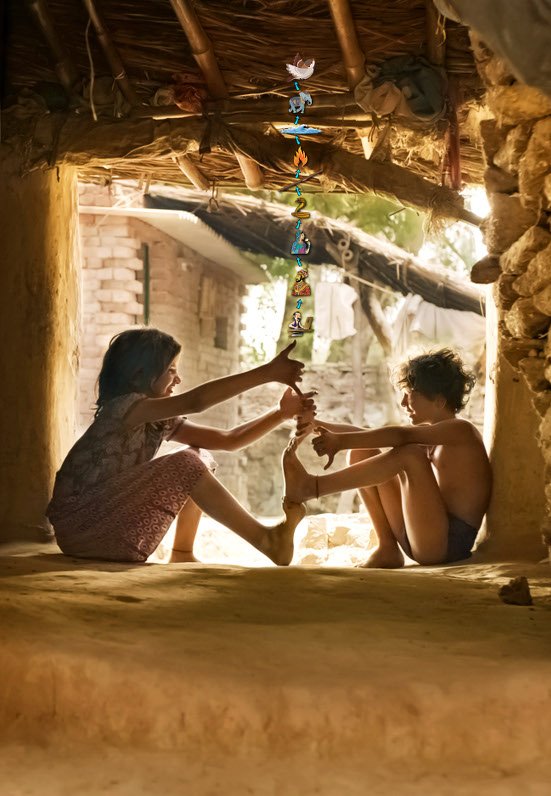 Brahmanand Siingh giving a talk at TIFF
Brahmanand Siingh giving a talk at TIFF
Jhalki is a film about bonded child labour and was screened at the Toronto International Film Festival this year. It stars Tanvi Jain, Sanjay Suri, Divya Dutta, Tanishtha Chatterjee and Boman Irani as Nobel Peace Prize winner Kailash Satyarthi. Minority-Review’s Swati Sharan got a chance to interview the film’s National Award-winning director Brahmanand Siingh. Hailing from Purnea, Bihar, he is a man who has worn many hats. He has been a journalist, documentary maker and now a feature filmmaker. Here is what he shared with us about the issues of child labour and partnering with NGOs
How did you get into the film line and what brought about your interest in making Jhalki?
It’s a long journey that most filmmakers go through. I started out my college days in Calcutta. In those 4-5 years, I threw myself into writing, debating, plays and following cinema. I then published over 3000 pieces in India and internationally. In the late ‘90s I embarked on making documentaries.
At one point I made a film on R.D. Burman and that did well. It got invited to about 40 international film festivals. It won about 15 awards and did very well critically and commercially. I now make films for Amazon and Netflix and theatrical releases. I have built an identity for films that are relevant and make a difference to people’s lives.
As far as Jhalki is concerned, this story was conceived a long time ago. Prakash Jha and I developed it and then we went into multiple drafts with a writer called Kamlesh Panti Singh. I wrote it first. Then Kamlesh Panti Singh wrote 3-4 drafts. Then between Tanvi (co-writer) and me, we wrote the next several drafts until the film was shot and canned earlier this year.

A scene from Jhalki
Kailash Satyarthi is also a part of the film. How did you get in touch with him to put this together?
In the past 30 years of his life, Kailash Satyarthi has freed 85,000 children from bonded child slavery with his team. So he has almost dedicated his life to it. I was not surprised when he got the Nobel Peace Prize. So it was a huge recognition and we have been in touch for many years now. In fact, the story of Jhalki is based on a lot of case studies that we accessed in Kailash’s library. We also did a lot of sittings with him where he would tell us things that we would then go out and explore ourselves. Then we would come back to him for cross-confirmations. So even during the process of writing the script, we would bounce it off many times with him for authenticity.
He felt that films like these need to be made. You make a documentary and maybe 50,000 people will see it. You make a feature film and 50 lakh people see it. I feel that the purpose of making a film does not end there. And that is where he is going to be of great help. He’s already very excited about it and so are we to partner together and see where this film can go other than just theatrical releases. It’s about what it may do to people who are not all that aware of the problem. We have a lot of plans to do things together with the film to get the maximum reach possible.
So you’ll be travelling with the film?
We are planning for a bi-scope cinema that Kailash Sathyarthi’s team will take along with them in to the interiors of the country to create a lot of awareness in places where this human trafficking happens. Trafficking happens not so because of the children but because of the parents who are completely ignorant of the problem. Even if they are not ignorant, they give into the momentary greed of receiving $100 or $80, which can get them meet their immediate needs for about three months. But they don’t realise what they are pushing their children into; the agents tell them things like, “Oh your kid will go to the city and will be very happy there and have a great life.”
The actual picture is very grim. When kids go there, they are made to work in inhuman ways and for long hours. There’s very little food, no attention and no care. So it’s a very sad scene. It’s the parents that need to know this. It’s not that parents don’t miss their children but I think that children miss parents much more in a scenario like this. After they (parents) have done it, they become helpless and they accept it as a way of life. And the agent keeps coming to the village so it doesn’t seem like a theft because they always get to know about the children and the agents will tell them, “Oh he is doing very well. Here’s this saree or torch or radio or pressure cooker for you.” These are the gifts that the agent brings.
It’s a very sad scene. So the parents need to know the dangers that await their kids.
Even urban people who see delivery boys in grocery stores who are 10-12 don’t recognise it as a problem. I think the first step is to be aware of the problem and the magnitude and impact of it. After that, they need to take action.
We will have a call for action. It intends to have an impact and change things whatever way it can right from the village or grassroots levels to the urban and the international scenario. Because 200 million people suffer from this worldwide and it’s not something that people know much about.
What are some of the call to action steps?
The call to action is of many kinds. The Kailash Satyarthi Children’s Foundation is the main platform where people can inform them if they see things like this (https://satyarthi.org.in/). They are coming on as our main cause partner alongside half a dozen other prominent NGOs working in this field. As the media platform, we are advertising them much in the same way you saw in the Geena Davis film This Changes Everything. We are asking people to come and join the movement and inform us when they notice children working and not getting education. Because children should be allowed to be children and to jump, play, have fun, make mistakes, study and be in the loving atmosphere of their family. Even at private trial screenings where we had not put a call for action, there has been enormous support. There are people who say, “I feel like doing something for the issue. This is what I can do.”
Are there any practical steps somebody could take?
We are asking that people make a note of what they see, click a photograph, send it to us and have the name of the store where say a young child is working or whatever his source of employment is so that can be forwarded to the activists. They can then take the necessary action.
In fact, we will probably have a separate film or book made on such actions so that we increase the awareness.
Who should people contact if they see something wrong?
There’s the Kailash Satyarthi Children’s Foundation and there are a few other foundations in Delhi or Mumbai who focus on this kind of a thing that you can reach. CRY and Give India are some that are coming on board and can be contacted too. Or the police can be contacted. Though it may not be as viable to contact them because they have other problems to deal with.
It’s the organisations, which are focused on children and their well being whose details we will be giving for people to contact. When people have seen the film towards the end, there are two to three numbers there or on the posters we will eventually have.
Is there a message you would like to leave our readers with?
Trafficking is a terrible thing. So is child labour. But I also recognise there are a lot of good things happening surrounding it. There are a lot of people taking notice of it and they are taking steps to rectify it. It’s just that we want that number to increase. I recognise the good intentions of a lot of people. I want that to turn into actions.
Watch the trailer for Jhalki here:
For more information you can go to https://www.facebook.com/Jhalkifilm/ and http://mobiusfilms.net/contact/



0
comments